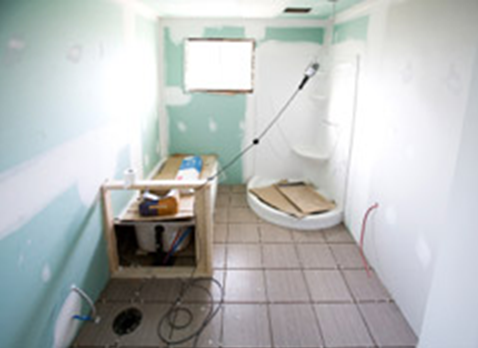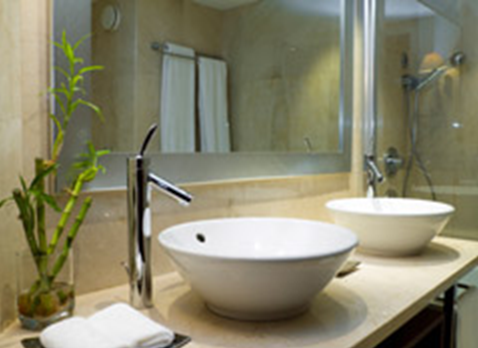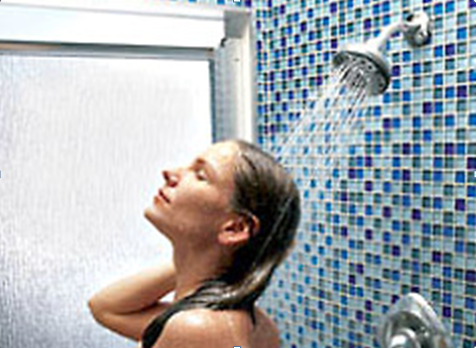This is our second article from Consumer’s Reports of dos and don’ts and a good place to start. The 2nd article gives seven mistakes to don’t do. Part Two – Don’ts (See Part One for Dos)
Seven costly mistakes
Avoiding these seven common goofs could save you thousands of dollars on the project, especially if you’re planning an upscale remodel. You’re also likely to enhance the comfort, style, and efficiency of the finished project.
Don’t rush the process
Now that you’re committed to the idea of a new bathroom, you probably want it done tomorrow. But poor planning is the leading cause of cost overruns on these projects. “Nothing is more expensive than doing things twice,” says Elizabeth Goltz, owner of Design by Oriong in Kansas City. Depending on the size and scope of your bath project, you should spend several weeks to a few months on the planning process. If you don’t have a Pinterest account yet, consider one. This website lets you keep a digital ideas file of inspiring images you find on the Internet, say for tile styles, favourite fixtures, and clever designs.
As you plan the space, try to come up with a design that keeps the major plumbing lines in place. Moving the toilet from one wall to another will mean relocating a 3-inch drain line in a home, which can cost thousands. “If you can keep the toilet, shower, and sink where they are, you’ll save significantly on the project,” says Petrie.
Don’t skimp on skilled labour
The do-it-yourself approach can be an effective way to trim costs, but it’s best to focus on the front and back ends of the project, say, ripping out the old tub during demolition and handling the finish painting. Leave the more complicated installations to professionals, ensuring they’re highly skilled. “A good tile setter can make a low-cost tile look expensive,” says Goltz. “On the flipside, you could spend a fortune on tile, and a bad tile layer will make it look cheap.”
Given how many trades are required for a typical bathroom remodel—plumbers, electricians, tile setters, cabinet installers, and more—it pays to find a top-notch general contractor to manage operations. Meet with at least three contractors, preferably those you find through word of mouth. Make sure the person you settle on has an up-to-date license and insurance, including workers’ compensation. And scrutinize the contract; it should list every product down to the model number and finish. And don’t automatically go with the lowest bid.
Don’t cut corners on key materials
Another common mistake is cheaping out on those items that get the most use. Lifetime warranties that cover leaks and stains have become more common on all but the cheapest faucets. PVD (physical vapor deposition) finishes resisted our best attempts at scratching them, but drain cleaners can stain them slightly. Chrome was also pretty durable in our tests, but can be scratched if you rub it with a heavy-duty scouring pad.
Tile is another material that you touch and feel each day. While you can find quality options for $5 per square foot, super cut-rate tiles may have slight size inconsistencies. The results will be crooked lines that make a bathroom look shoddy.
So where can you save? Light fixtures tend to perform the same across most price points—it’s the high design that costs more. You might also find that opting for a basic finish on faucets and fixtures saves you hundreds of dollars without compromising quality. And you definitely don’t need to blow your budget on a luxury toilet, like Kohler’s $6300 Numi, with its motion-activated lid and built-in bidet. Those are cool features, but toilets costing as little as $300 delivered the best flush in our tests.
Don’t stop thinking about tomorrow
You may be the picture of good health today, but you can’t predict the future. What you can do, however, is ensure that your bathroom will serve you and your loved ones regardless of your abilities by following the basics of Universal Design (i.e. aging in place). “It is absolutely coming onto people’s radar, even younger clients,” says Alan Zielinksi, president of the NKBA.
And you don’t have to worry about ending up with an institutional look. Many universal design features are now part of mainstream bathroom design. For example, the larger shower stall that’s in favor today offers easy access and universal use, provided it has a zero-threshold and a built-in seating platform. “The bench is also a nice place for an able-bodied women to sit and shave her legs,” says Cheetham. Regarding toilets, so-called comfort-height models that are easier to get on and off of are now just as common as standard-height models. Even grab bars have enjoyed a design upgrade; many now match towel bars and other accessories. And they’re not just for the elderly. Grab bars make it easier for pregnant women or young children to get in and out of the bathtub.
Even if you don’t incorporate every element of Universal Design into the bathroom now, it’s worth putting in the structural framework, such as blocking in the walls for future support bars. Make sure your contractor makes a drawing of the wall so that you can find the blocking if, and when, the time comes.
Don’t forget to factor in water use
Bathroom fixtures have become more water-efficient, especially if you choose WaterSense-qualified models. But the trend toward tricked-out showers, often with his-and-her “shower towers” that might include multiple showerheads and body sprays, will likely result in your water and energy use going up. It also means your bathroom’s existing drain and plumbing lines might require an upgrade. “You may need to resize your water lines from half-inch to three-quarters,” says Petrie, an upgrade that can add hundreds, if not thousands, to your project.
Thirsty fixtures may require you to upgrade your water heater as well, say, from a unit that holds 50 gallons a day to one that holds 80 gallons. That could cost you another $1,000 or so—figure on roughly $2,000 if you choose one of the energy-efficient hybrid water heaters that Consumer Reports' test have found to be good long-term investments.
Don’t buy products online without seeing them in person
Going online is great for researching products and design ideas. But materials and finishes aren’t always as they appear on your computer screen. That blue-gray quartz vanity top might be more blue than gray in real life, or the light fixtures that look understated online could overwhelm your actual space. That’s why we always recommend visiting a showroom or design center before you buy. While you’re there, you may even get the showroom to meet or even beat the online price.
Don’t forget about storage
Running from the shower to grab a towel from the hallway linen closet gets old—and cold—fast. A closet inside the bathroom is ideal, though an armoire or even just a simple chest can handle the essentials. And a medicine cabinet is still the best place for your various health-care and first-aid essentials.
That'll make you happy and seven you may regret.
Published: March 2012 Consumer’s Reports






